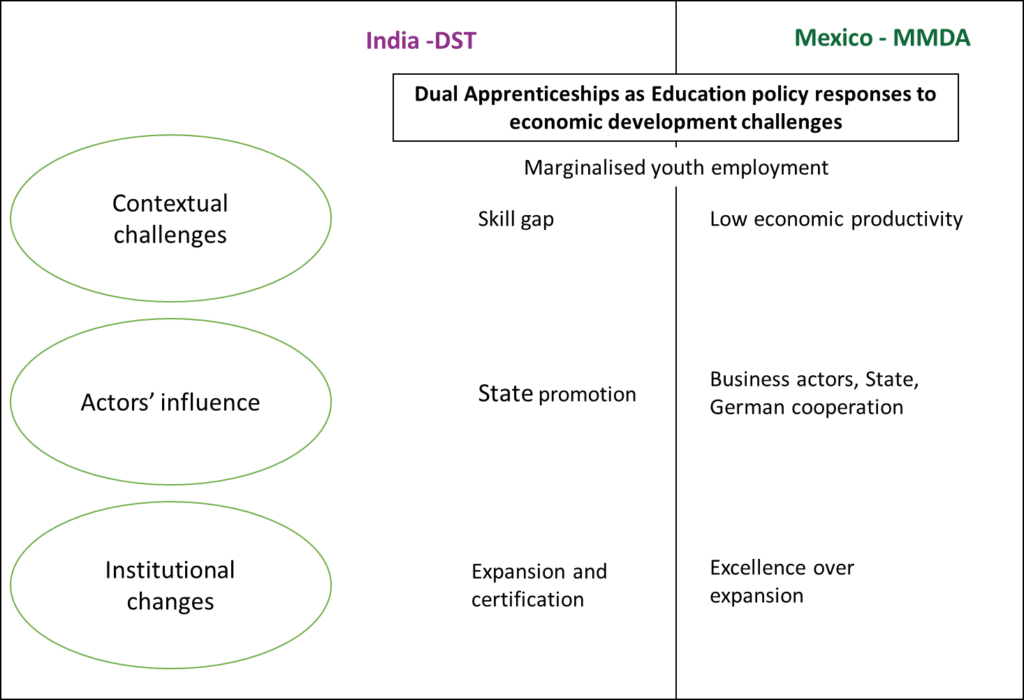The Policy Adoption Work Package (WP2) will analyse the material and ideational drivers of the adoption and re-contextualization of dual apprenticeships into different regulatory frameworks and policy interventions at national and local level in India and Mexico.
The analysis of the policy adoption of dual apprenticeships in India and Mexico will draw on the cultural political economy (CPE) approach to policy analysis).
The research questions that CPE allows us to address are:
- How do different material conditions and narratives of variation define the social and educational problems that dual apprenticeships should tackle?
- How the analysis of the feasibility and adequacy of dual apprenticeships in particular contexts affect their selection as policy solutions?
- What governance technologies are put in place to retain dual apprenticeship practices and to govern its participants (apprentices, employers, trainers)?
The analysis of the policy adoption addresses the way different material conditions and discourses define the social problems that dual apprenticeships should tackle; the processes that led to their selection as feasible and adequate policy solutions to these problems; and the governance technologies put in place to implement these programmes.
This analysis will consist on the qualitative analysis of two national (India & Mexico) and two local case studies in each country (Maharashra & West Bengal; State of Mexico & Coahuila). The selection of the local case studies has followed two criteria:
- All the regions should present a significant number of apprentices
- One of the regions should have its economy mainly oriented to the manufacturing sector (Maharashtra & State of Mexico) while the other should be mainly oriented to the service sector (West Bengal & Coahuila). The methods will entail a stakeholder analysis that corresponds with interviews to key informants (e.g. German cooperation agencies, ministries of education, chambers of commerce, state governments, civil society) and document analysis (archives work, legal texts, policy reports, media news). The sample of 65 informants include: five cooperation actors in Germany (n=5), 20 national stakeholders in each country (n=40), and five implementers in each region (n=20). Each case study will be constructed through the process-tracing technique and the data analysed via discourse analysis. In order to facilitate the comparison between countries and regions, we will carry out a quantitative characterisation of the contexts of the study through secondary statistical data.
Research Design: WP2 Analytical framework
Interview Schedule: WP2_interview_schedule
Interview Notes: WP2_interview_notes_template

